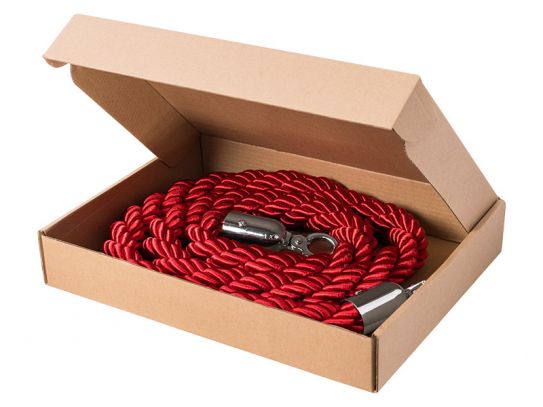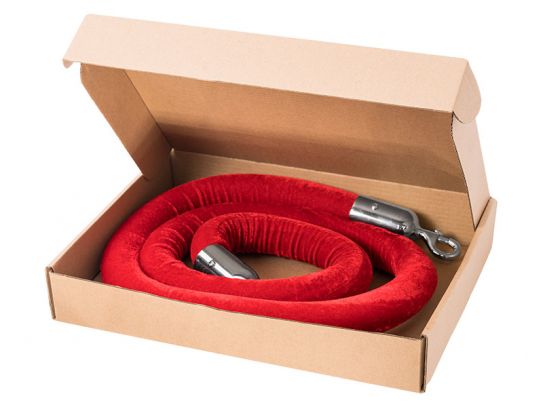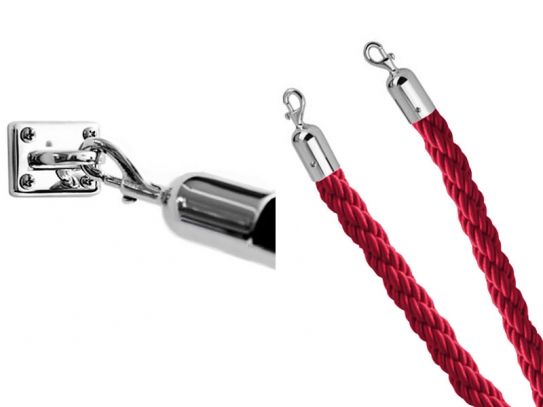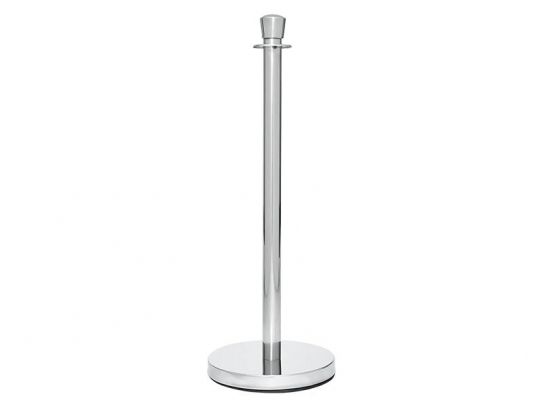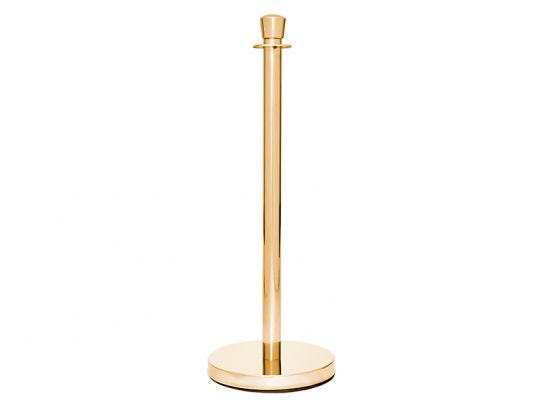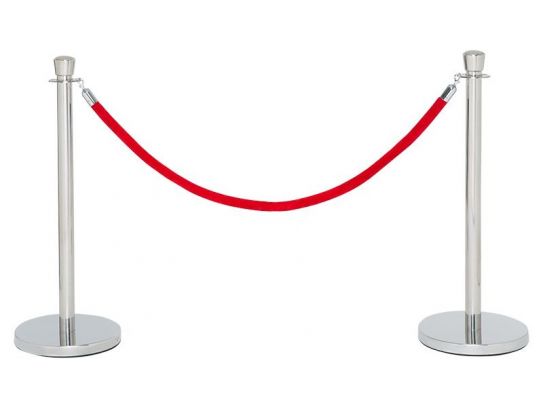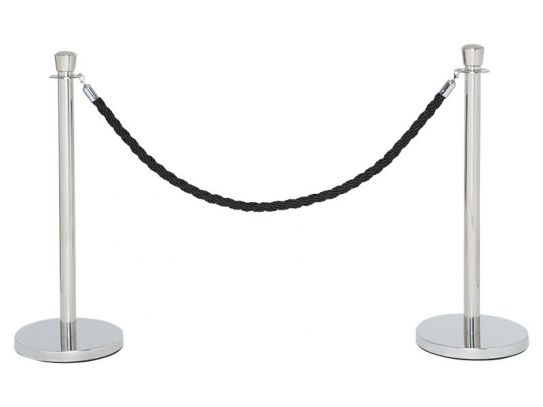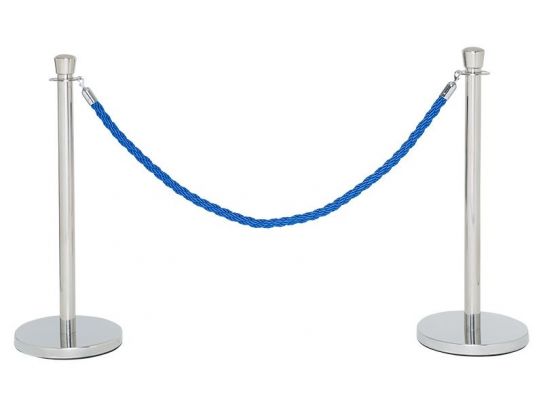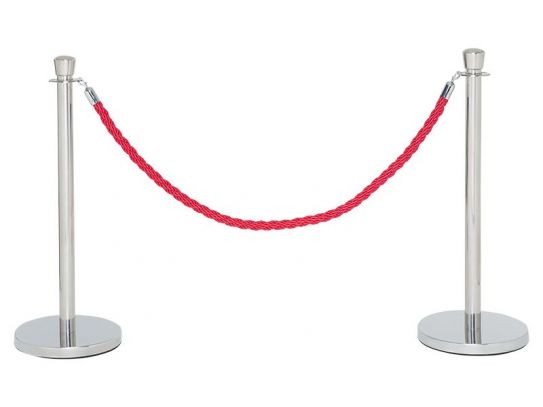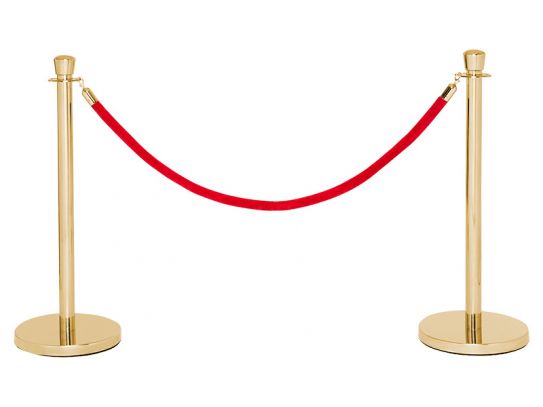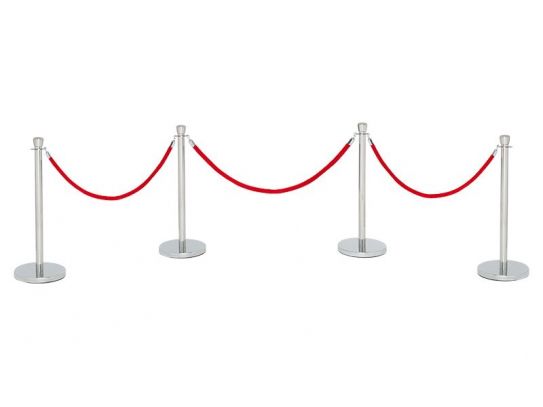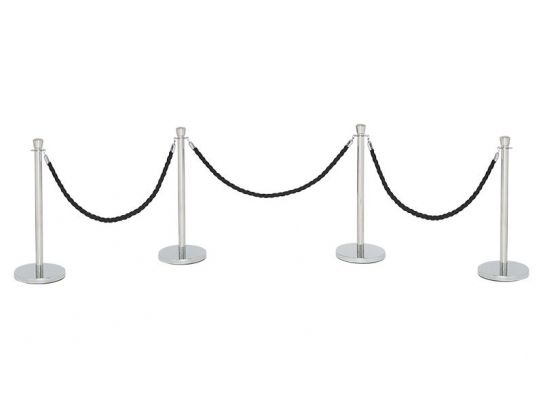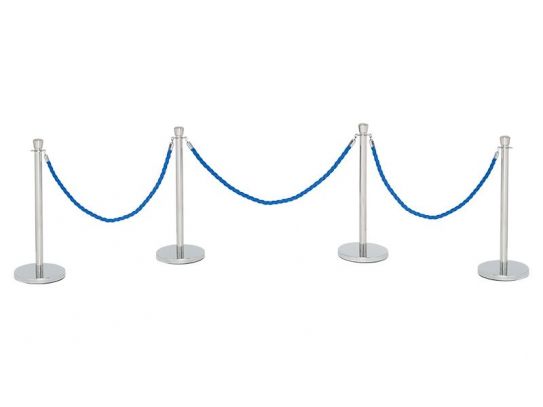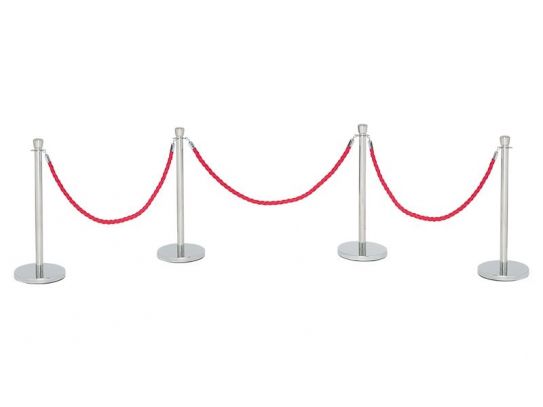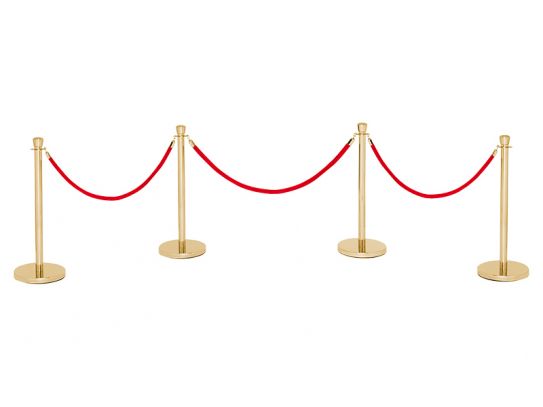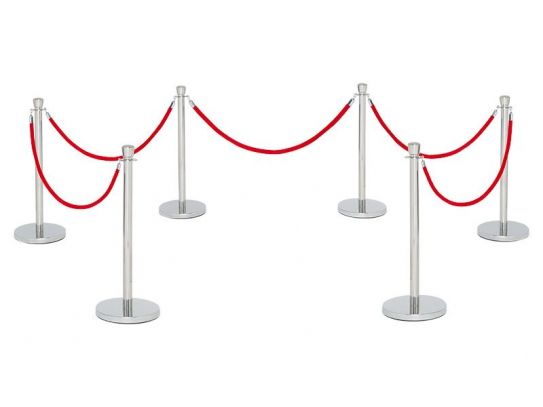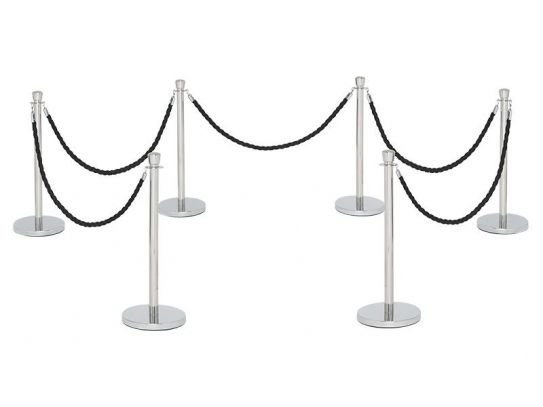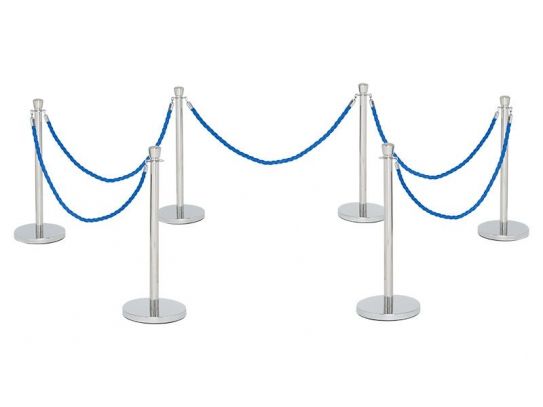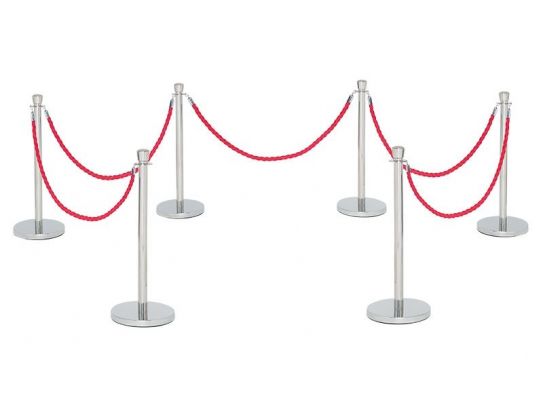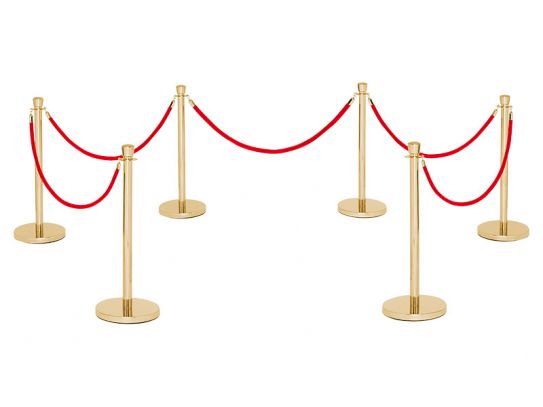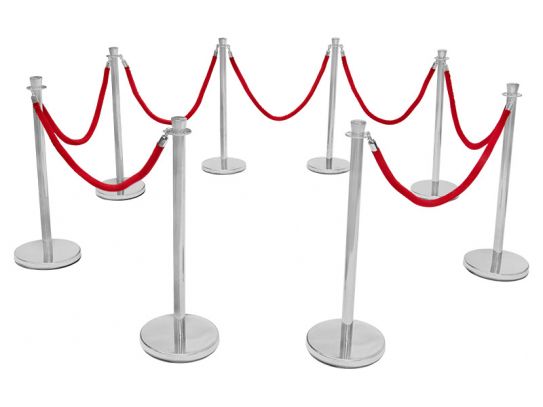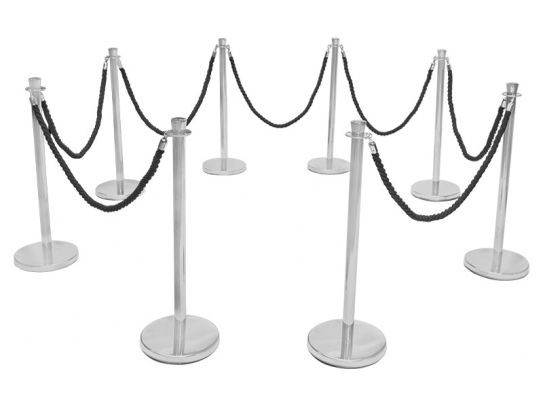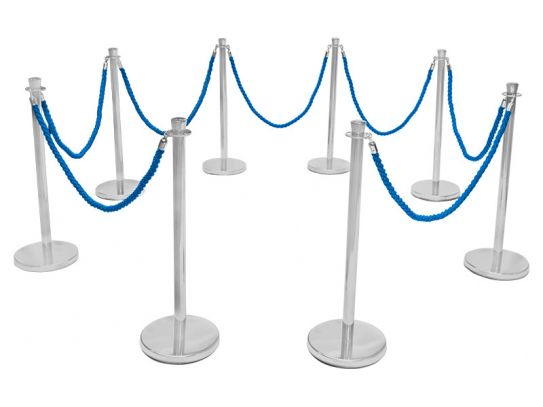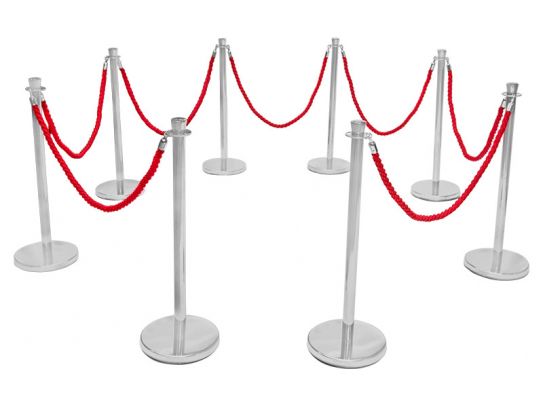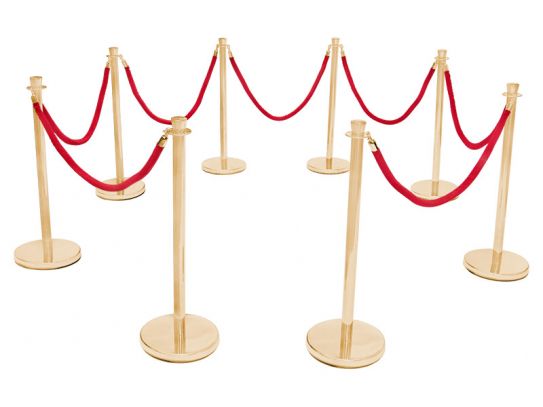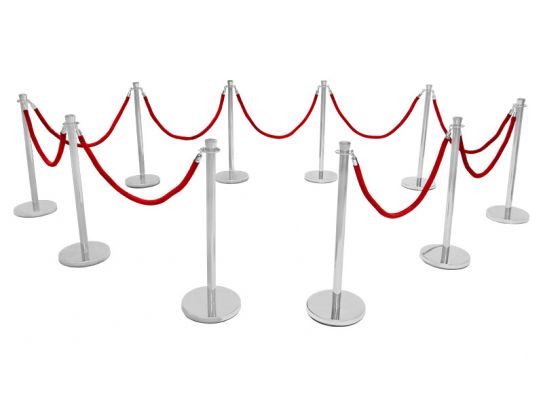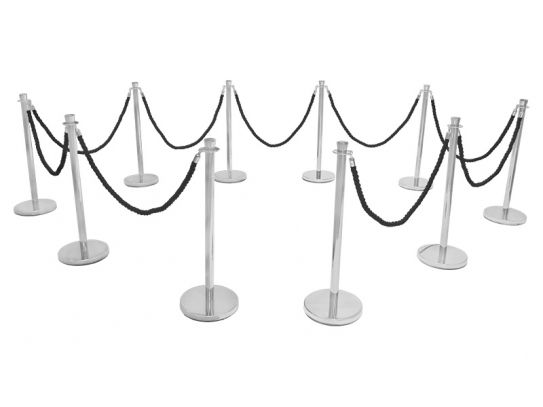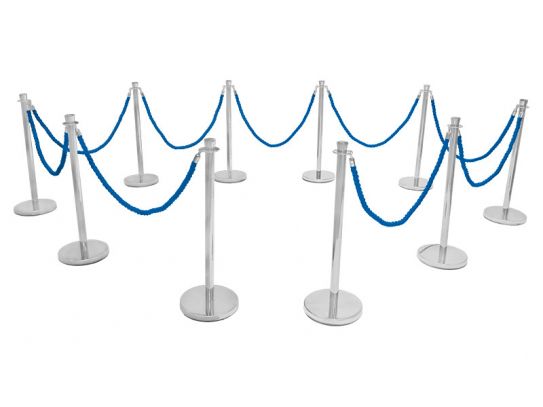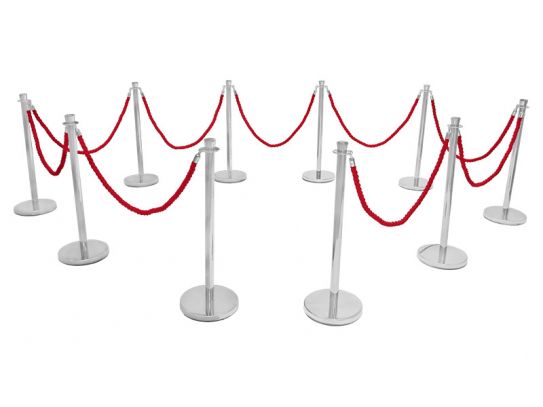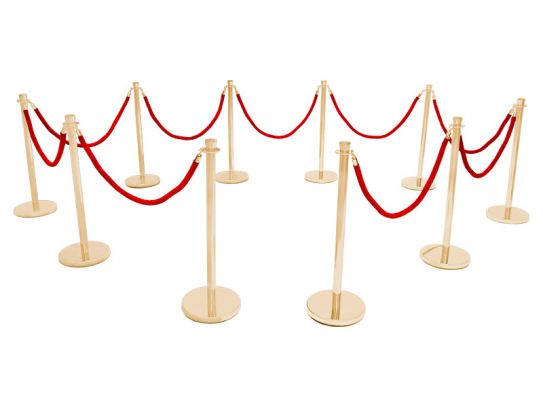Rope Barriers
An Elegant Solution for Crowd Management
Are you in need of a way to efficiently and stylishly manage crowds and queues? Look no further than our range of high-quality rope barriers!
Featuring a sleek design and durable construction, our rope barriers are perfect for a variety of settings, from upscale events to busy retail stores. They are easy to set up and provide a professional, polished look that will enhance the atmosphere of any space.
But don't just take our word for it - try them out for yourself and experience the difference that our rope barriers can make. With a range of colours and styles to choose from, you're sure to find the perfect option to suit your needs. Order now and take the first step in creating a more organised and orderly environment.
What Are Rope Barriers?
Rope barriers, also known as stanchions or velvet ropes, are barriers used to manage crowds and queues in public spaces. They typically consist of a metal post with a retractable rope attached, and are used to create a visual barrier that guides people in a specific direction or keeps them out of certain areas. Rope barriers are commonly used in settings such as theatres, museums, airports, banks, and other public spaces where crowd control is necessary.
What Are Some Common Uses for Rope Barriers?
Rope barriers are commonly used in a variety of settings to manage crowds and queues. Some common uses for rope barriers include:
- Creating a line for people to wait in at events, such as concerts, plays, or movie theatres
- Directing traffic flow in busy retail stores or malls
- Keeping people out of restricted areas, such as backstage at a concert or the VIP section at a party
- Providing a visual barrier to guide people in the right direction, such as at airports or museums
- Defining the boundaries of a designated area, such as a red carpet entrance or a VIP lounge
Overall, rope barriers are a versatile and effective tool for managing crowds and creating a more organised and orderly environment.
What Are the Different Types of Rope Barriers?
There are a few different types of rope barriers, each designed for specific uses and settings. Some common types of rope barriers include:
- Wall-mounted barriers: These barriers are mounted on a wall or other vertical surface, and feature a retractable rope or belt. They are typically used in settings where floor space is limited, such as museums or art galleries.
- Crowd control stanchions: These are larger, sturdier barriers that are often used in high-traffic areas where a more robust barrier is necessary. They may feature a retractable belt, rope, or chain, and are commonly used at events such as concerts or festivals.
- Velvet ropes: These are a type of rope barrier that features a plush, velvet rope attached to a metal post. They are often used in more upscale settings, such as VIP areas at parties or events, to create a more luxurious and exclusive atmosphere.
Overall, the type of rope barrier you choose will depend on your specific needs and the setting in which it will be used.
What Are the Key Features to Consider When Choosing Rope Barriers?
When choosing rope barriers, there are a few key features to consider to ensure that you select the best option for your needs. Some important things to consider include:
- Size and weight: Rope barriers come in a range of sizes and weights, so it's important to choose a barrier that is appropriate for the space in which it will be used. Larger, heavier barriers may be necessary in high-traffic areas, while smaller, lighter barriers may be more suitable for smaller spaces.
- Material and durability: Rope barriers are typically made of metal, and the quality of the material can vary. Look for barriers made of high-quality materials that are built to last, as they will be able to withstand the rigours of everyday use.
- Retractability: Many rope barriers feature a retractable rope or belt, which can be extended to create a barrier and then easily retracted when not in use. This is a convenient feature that can save space and make it easier to use the barriers.
- Style and appearance: Rope barriers come in a range of styles and appearances, so you can choose a barrier that will complement the aesthetic of your space. From sleek, modern designs to more traditional, classic styles, there are many options to choose from.
Overall, consider your specific needs and the setting in which the barriers will be used, and choose a rope barrier that offers the right combination of size, durability, retractability, and style.
How Do I Choose the Right Size and Style of Rope Barrier for My Space?
To choose the right size and style of rope barrier for your space, consider the following factors:
- The size and layout of the space: Rope barriers come in a range of sizes, so it's important to choose a size that will be appropriate for the space in which it will be used. If the space is small or cramped, you may want to choose smaller, more compact barriers. If the space is large or has a complex layout, larger barriers may be necessary to effectively manage crowds and queues.
- The intended use of the barriers: Consider how you will be using the barriers, and choose a style and size that will be appropriate for the specific tasks you need them to perform. For example, if you need to create a long, continuous line, you may want to choose a longer barrier. If you need to keep people out of a small, restricted area, a smaller barrier may be more suitable.
- The aesthetic of the space: Choose a style of rope barrier that will complement the aesthetic of the space in which it will be used. Rope barriers come in a range of colours and styles, from sleek, modern designs to more traditional, classic styles, so you can choose a barrier that will fit in with the overall look and feel of the space.
How Do I Clean and Maintain My Rope Barriers?
To clean and maintain your rope barriers, follow these steps:
- Clean the barriers regularly: To keep your rope barriers looking their best, clean them regularly using a soft, damp cloth. Avoid using abrasive cleaners or harsh chemicals, as these can damage the surface of the barriers.
- Remove any dirt or debris: If the barriers are particularly dirty or covered in debris, remove it using a soft brush or vacuum cleaner. Be sure to clean the entire barrier, including the retractable rope or belt and the base of the post.
- Check for damage: Inspect your rope barriers regularly for signs of damage, such as bent or broken posts, frayed ropes, or other issues. If you notice any damage, repair or replace the affected barriers as necessary to ensure that they remain functional and safe to use.
- Store the barriers properly: When not in use, store your rope barriers in a dry, protected area to keep them safe from damage. This will help to extend the life of the barriers and keep them in good condition.
Are There Any Safety Concerns with Using Rope Barriers?
There are a few safety concerns to be aware of when using rope barriers. Some things to consider include:
- Crowd control: Rope barriers are used to manage crowds and queues, but they can be knocked over or pushed aside if people push or shove against them. To prevent this, make sure the barriers are anchored securely and positioned in a way that allows for adequate crowd control.
- Retractable ropes: Some rope barriers feature retractable ropes or belts that can be extended and retracted. These ropes can be a potential tripping hazard, so make sure they are extended only when necessary and retracted when not in use.
- Sturdy construction: Rope barriers should be made of high-quality materials and be sturdy enough to withstand the rigours of everyday use. Poorly-made barriers may be prone to breaking or collapsing, which can create a safety hazard.
